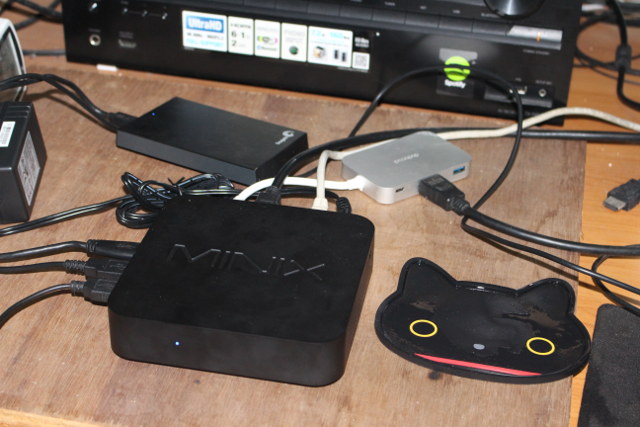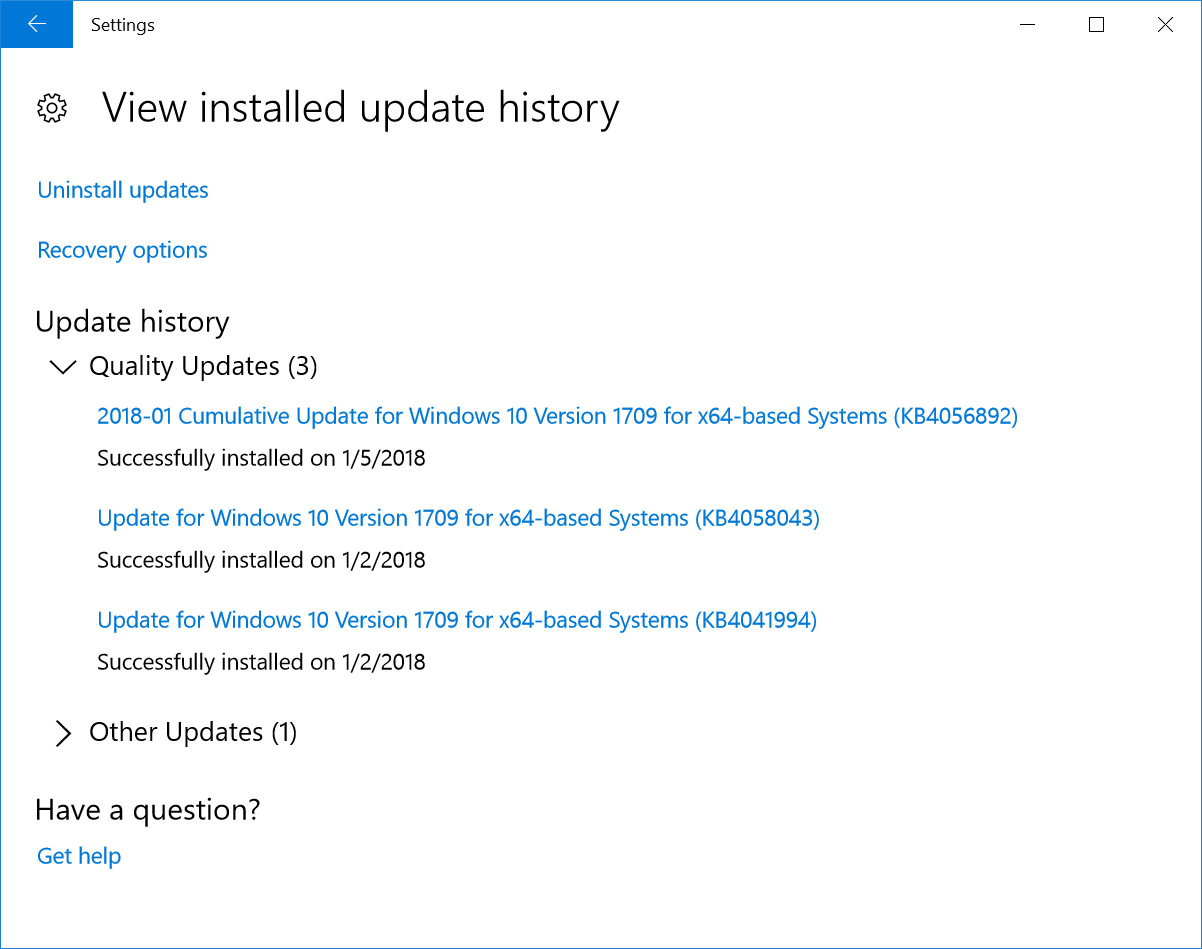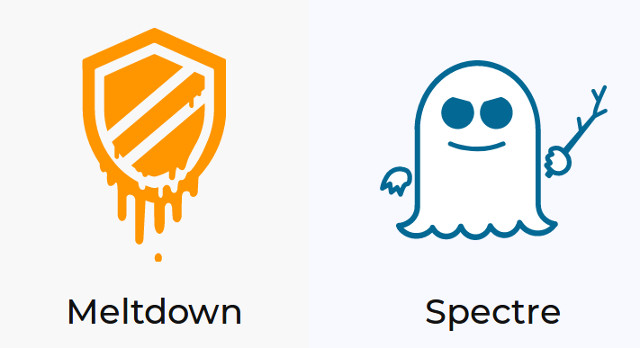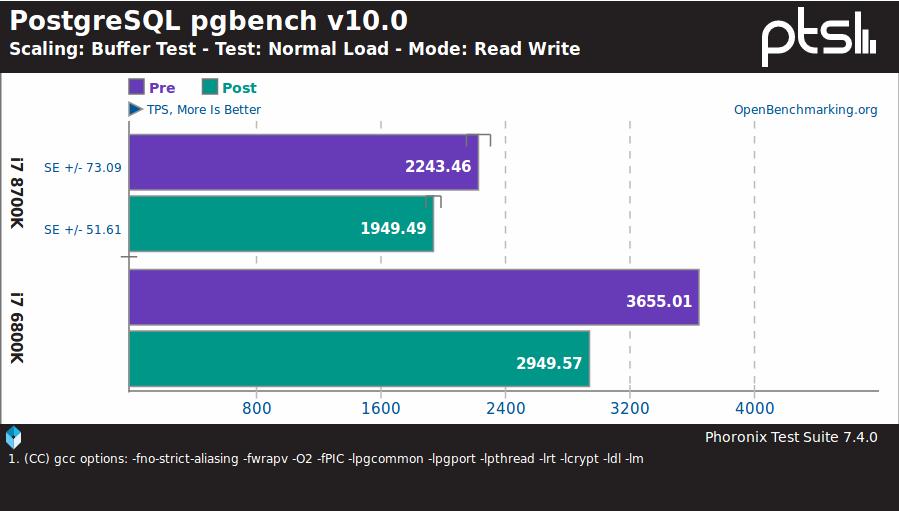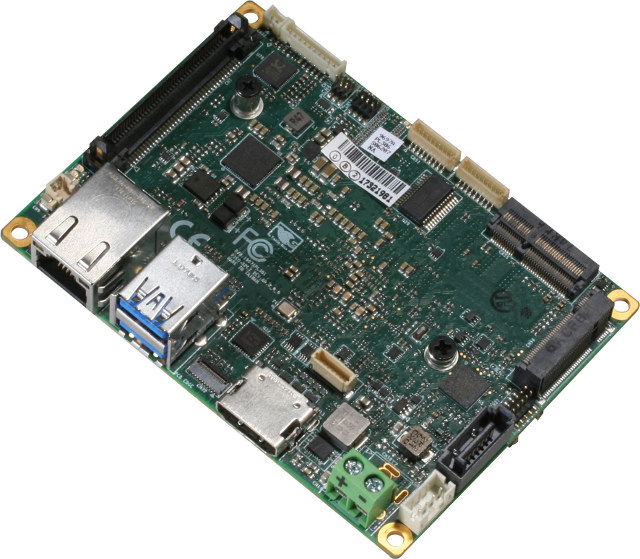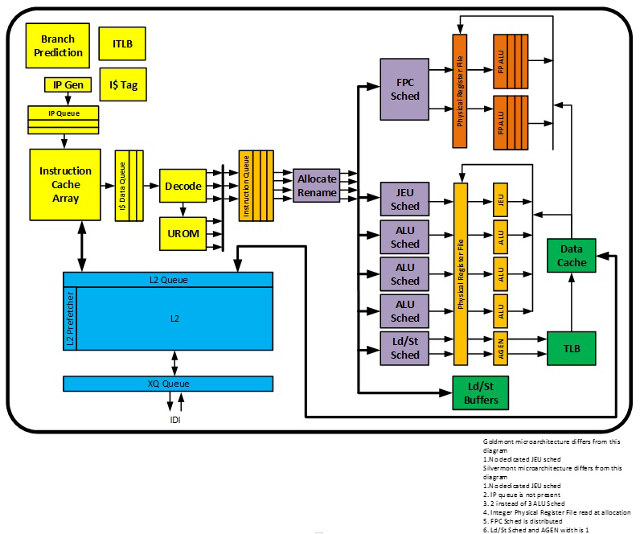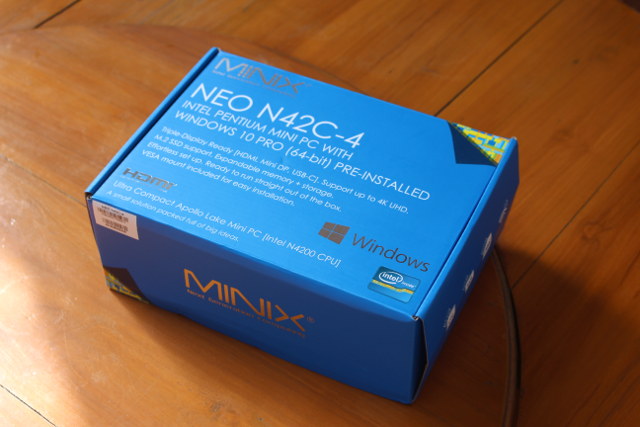MINIX NEO N42C-4 is the first Apollo Lake mini PC from the company, which also happens to be their first one with a fan, using internal antennas for WiFi and Bluetooth, and offering user-upgradeable storage and memory thanks to M.2 and SO-DIMM slots. The device also features three video output via HDMI 2.0, mini DiplayPort, and USB Type C ports supporting up to three independent display. I’ve received a sample and already checked the hardware, and showed how to install an M.2 SSD and SO-DIMM RAM to the device in the first part of the review entitled MINIX NEO N42C-4 Triple Display Capable Mini PC Review – Part 1: Unboxing and Teardown, so I’ll report my experience with Windows 10 Pro in the second part of the review, and there should also be a third part specifically dealing with Linux support. MINIX NEO N42C-4 Setup, System Info, BIOS The device […]
Intel Apollo Lake Windows 10 Benchmarks Before and After Meltdown & Spectre Security Update
So this week, there’s been a fair amount of news about Meltdown & Spectre exploits, which affects all major processor vendors one way or another, but especially Intel, and whose mitigations require operating systems and in some case microcode updates that decrease performance for some specific tasks. Microsoft has now pushed an update for Windows 10, and since I’m reviewing MINIX NEO N42C-4 mini PC powered by an Intel Pentium N4200 “Apollo Lake” processor, and just happened to run benchmarks before the update, so I decided to run some of the benchmarks again to see if there was any significant difference before and after the security update. First I had to verify I had indeed received the update in the “installed update history”, and Windows 10 Pro was updated on January 5th with KB4056892, which is what we want, so let’s go ahead. Benchmarks before Update PCMark 10 is one […]
Companies Address Concerns related to Speculative Execution Exploits: Meltdown and Spectre
Yesterday, news surfaced about a “bug” in Intel processors that could be fixed at the operating system level at the cost of a decrease in performance for some tasks, from a typical, and barely noticeable 5% hit, to a more consequent 30% hit for some specific tasks, and as we discussed yesterday I/O intensive tasks are the most impacted by the changes. While Intel (and Arm) are impacted, AMD claims not to be, and the issue was reported by major news outlets and likely impacting the stock price of the companies with Intel stock losing 3.39%, and AMD stock gaining 5.19%, so obviously every company felt the need to answer, starting with Intel’s response to security research findings: Recent reports that these exploits are caused by a “bug” or a “flaw” and are unique to Intel products are incorrect. Based on the analysis to date, many types of computing devices […]
Intel Hardware Security Bug Fix to Hit Performance on Windows, Linux…
Many security bugs can be fixed without performance penalty , but according to reports Intel processors have a hardware bug – whose details have not been disclosed yet (embargo) – that seems to affect all operating systems including Windows, Linux, Mac OS, etc…, and the fix may lead to significant performance hits for some tasks. We know a bit more thanks to the Kernel Page Table Isolation (KPTI) patch for Linux that enables the fix/workaround with X86_BUG_CPU_INSECURE feature. The fix used to be called KAISER, and there’s an explanation on LWN about “hiding the kernel from user space” about the issue: On contemporary 64-bit systems, the shared address space does not constrain the amount of virtual memory that can be addressed as it used to, but there is another problem that is related to security. An important technique for hardening the system is kernel address-space layout randomization (KASLR), which randomizes […]
PICO-APL3 Apollo Lake Pico-ITX Board Comes with an Optional TPM 2.0 Module
AAEON has launched another industrial Pico-ITX board powered by Intel Celeron/Pentium Apollo Lake processors with their PICO-APL3 Pico-ITX single board computer featuring either Celeron N3350 or Pentium N4200 processor together with 2 to 4GB soldered DDR3L memory, and 16 to 64 GB eMMC flash. The company explains that one of key differences against other similar board is the option for a TPM module / hardware security that would allow applications such as payment processing for retailers or on the go. AAEON PICO-APL3 board specifications: SoC Intel Celeron N3350 dual core Apollo Lake processor @ up to 1.10/2.40GHz with 12EU Intel HD Graphics 500; 6W TDP Intel Pentium N4200 quad core Apollo Lake processor @ up to 1.10/2.50GHz with 18 EU Intel HD Graphics 505; 6W TDP System Memory – 2GB DDR3L on-board (Option to 4GB) Storage – 16GB eMMC flash (32/64 GB as option), 1x SATA III port (5V/12V power), […]
Year 2017 in Review, Top 10 Posts, and Some Fun Stats
2017 is coming to an end, and as I do every year, I’ll take a look back at the year that was on CNX Software. The pace of development boards launches has not slowed down this year, and we get an even wider range from the low-end with Orange Pi or NanoPi boards, to much more powerful ARM boards, and some new entrants like Libre Computer. The same is true for TV boxes, most of which now support 4K HDR, ranging from ultra cheap models selling for less than $20 to higher end Android TV boxes, while mini PCs were dominated by Intel Apollo Lake models, although some Cherry Trail products were also launched. Processor-wise, Amlogic launched more Amlogic S905X derivatives with S905W/S905D/S905Z, which are popular in the TV box market. Rockchip’s most interesting processor this year was RK3328 quad core Cortex A53 processor designed for 4K HDR Android TV […]
More Details about Goldmont Plus Microarchitecture (used in Gemini Lake Processors)
2017 was the year of systems based on Intel’s low power, low cost Apollo Lake processors, and provided Intel does not suddenly decide to cancel yet another product, they will be replaced by Gemini Lake processors in 2018. The former is based on Goldmont microarchitecture, while the latter relies on the updated Goldmont microarchitecture. Intel has now released a document entitled “Intel 64 and IA-32 Architectures Optimization Reference Manual” where you’ll find more gritty technical details about Goldmont Plus in chapter 16 “SOFTWARE OPTIMIZATION FOR GOLDMONT PLUS, GOLDMONT, AND SILVERMONT MICROARCHITECTURES”. The enhancements over Goldmont include: Widen previous generation Atom processor back-end pipeline to 4-wide allocation to 4-wide retire, while maintaining 3-wide fetch and decode pipeline. Enhanced branch prediction unit. Improved AES-NI instruction latency and throughput. 64KB shared second level pre-decode cache (16KB in Goldmont microarchitecture). Larger reservation station and ROB entries to support large out-of-order window. Wider integer execution […]
MINIX NEO N42C-4 Triple Display Capable Mini PC Review – Part 1: Unboxing and Teardown
MINIX NEO N42C-4 mini PC was first unveiled last September at IFA 2017, as the first Apollo Lake mini PC from the company. The device has some interesting features like the possibility to upgrade the RAM thanks to two SO-DIMM slots, and storage via an M.2 SSD slot, and support for up to three display via HDMI 1.4, mini DisplayPort 1.2, and USB type C connector. Just like MINIX NEO Z83-4 Pro model, the device is pre-loaded with an activated version of Windows 10 Pro, and includes a VESA mount. The company has now officially launched the device, with sales starting at the end of December for US$299.90 / 299.90 Euros on sites like Amazon [Update: NEO N42C-4 is now up for pre-order on GearBest]. MINIX has sent me a unit for review, so as usual, I’ll start by checking out of hardware, before testing Windows 10 Pro, system performance […]


